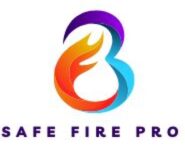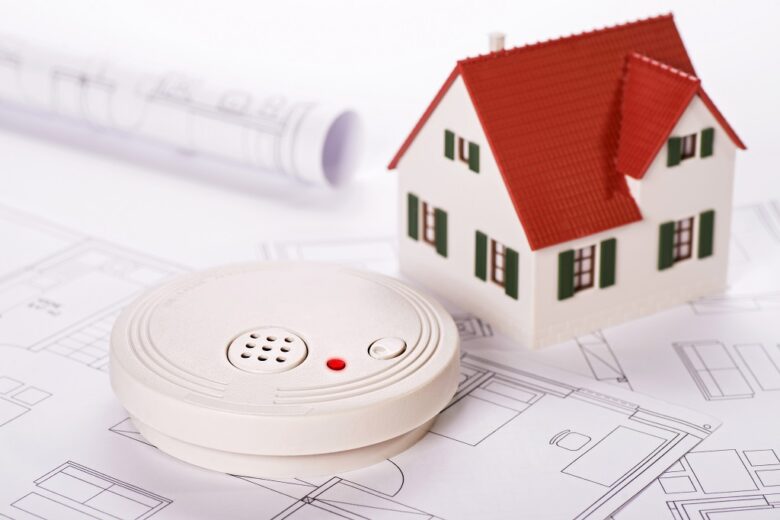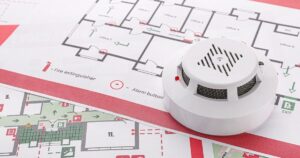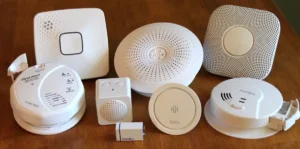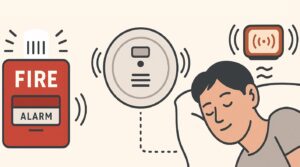Fire alarms can help mitigate property losses and expedite the return to business of both businesses and homes, by alerting those with the necessary expertise to extinguish or evacuate any fire quickly and safely.
Fire alarm control panels are at the core of any fire detection system, collecting input from various sensors and signalling other initiating devices like smoke detectors to operate.
Smoke Detectors
Early detection of smoke can save lives, limit property damage and speed the restoration process. Studies show that three out of five deaths due to housefires occur in homes without functioning smoke alarms.
Smoke detectors provide early warning of fire danger, giving people time to evacuate the building, call emergency services and even use fire extinguishers if necessary. Their early alert can also stop small fires from spreading rapidly – which could prove particularly hazardous to young children, senior adults or those with mobility challenges.
Choose a smoke alarm that best meets your needs from among their many models and types, for instance an ionization detector uses radioactive material in quantities so small as to be harmless to health in order to ionize air molecules between two electrodes in the detector chamber and create an electric field between them; when smoke particles enter this ionized air they attach themselves and decrease current flow triggering alarm.
Photoelectric detectors are more sensitive to slow, smoldering fires. Additionally, they can detect smoke particles from other sources as well, including dust or food debris. Some alarms combine both technologies into one alarm. No matter which one you select, install alarms outside each sleeping area on all levels of your home including basements – testing them monthly by pressing their test buttons.
Carbon Monoxide Detectors
Carbon monoxide (CO) is an invisible, odorless and tasteless gas produced when fossil fuels like wood, gasoline, coal, propane and heating oil are burned incompletely – producing this so-called silent killer which is produced when enclosed spaces lack adequate ventilation. Carbon monoxide detectors monitor levels of this dangerous poisonous gas in the air and sound an alarm if levels rise to unsafe levels.
CO detectors are essential in homes with gas or other fueled furnaces, fireplaces and attached garages; they’re also recommended for hotels, apartment buildings and other inhabited dwellings. CO detectors can be integrated with fire alarm systems, HVAC systems or building management systems for centralised monitoring and control.
Most detectors are small rectangular or round devices designed for wall or ceiling mount that feature a digital display showing current CO levels as well as an alarm signal. Many also come equipped with test and silence buttons that help verify functionality as well as battery compartments for easy replacement in case batteries become low.
Carbon monoxide detectors should be placed in an easily accessible location near bedrooms on each level of your home and near potential sources such as furnaces, fireplaces, or attached garages that could release carbon monoxide into the atmosphere. They should be tested monthly and replaced every six months or as recommended by manufacturer guidelines; additionally they should be kept out of areas that could become dirty, oily, greasy or dusty so as not to become compromised and coated with contaminants that could contaminate or coat their sensors.
Fire Extinguishers
Fire extinguishers are one of the most essential safety tools to have in any home or office, providing peace of mind knowing you will be prepared in case disaster strikes. Fire extinguishers provide control and containment capabilities that could save lives – not only do they save them from spreading further but they can provide peace of mind should disaster strike!
Working smoke and carbon monoxide detectors are an absolute necessity in every home, while commercial buildings should consider installing more comprehensive alarm systems with more comprehensive capabilities that go beyond reacting only to smoke, such as high-pitched noises, strobe lights or vibrators for those with hearing impairments.
An easily accessible fire extinguisher should be kept in all areas of your house where fire hazards exist, including kitchen, living area, bedrooms and garage. Make sure all family members, guests and babysitters know where this extinguisher can be quickly grabbed during an emergency situation. Have it serviced annually so it will always be ready when needed. Additionally, local fire departments typically offer training materials on how to use extinguishers, helping select appropriate models and ensure they are serviced on schedule.
Emergency Calls
Your fire alarms at home are part of a larger fire detection system. There are typically two varieties of detectors: ionization and photoelectric. Both types can detect smoke particles produced from burning wood and other sources; however, ionization detectors tend to be more sensitive in detecting small black soot particles produced by flaming fires while photoelectric detectors excel at picking up larger, lighter-colored particles like those emitted by smoldering fires. There are dual sensor alarms which combine both technologies technologies as well.
Fire detection systems often require periodic testing and maintenance, to ensure they will operate effectively in an emergency situation. Commercial alarms, typically monitored 24/7, are more sophisticated, typically employing numerous smoke detectors, heat sensors, flame detectors and sprinkler systems to alert occupants to danger quickly before dispatching the fire department promptly.
Physical cabling connects multiple smoke detectors and call points together, with a fire alarm control panel acting as the brain of the system. The fire alarm control panel collects input from various detectors, identifies sources of problems and sends out signals to initiating devices; these could either be manually activated such as “in an emergency, break glass” stations that you have likely seen, or automated by the detectors themselves. Furthermore, detectors and call points are grouped into zones so fire brigades can quickly locate where a fire may exist in a building.
